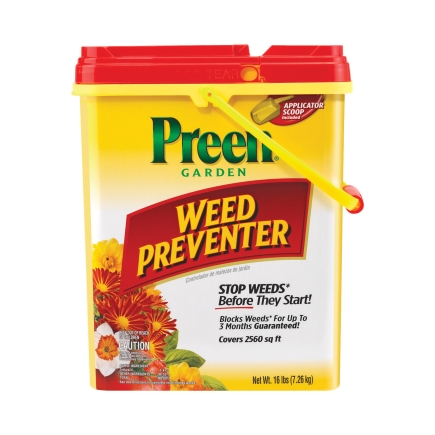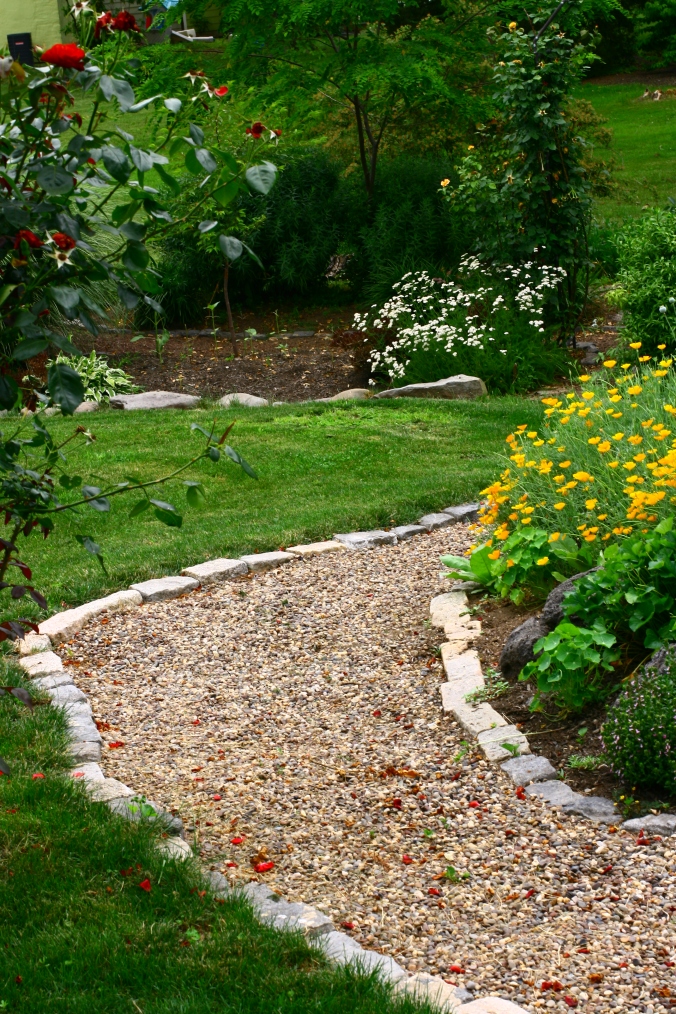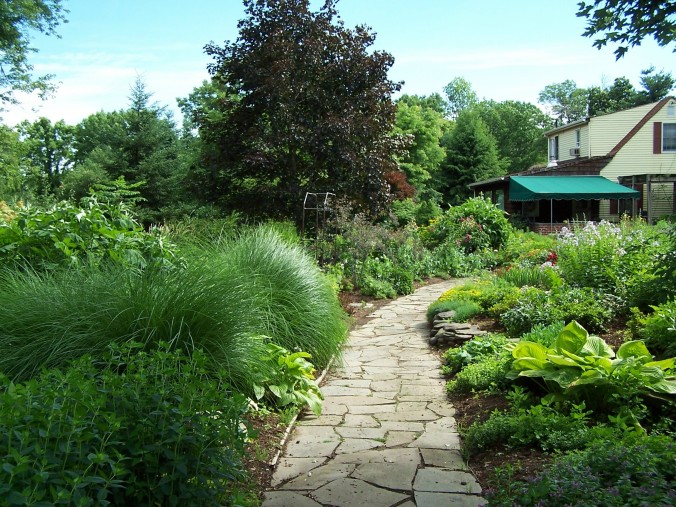


<.
|
|
||
How I control weeds in my stone pathways
I love my stone paths. They add structure and beauty to the garden, and I love the way they sound when you walk on them. There are so many choices between color and size of gravel for pathways. When my husband was constructing the paths, he dug down and removed approximately 6″ of top soil, laid down landscape fabric, then dumped in the gravel.
The first couple of years they were weed free, but after many years there has been an accumulation of organic material that has sunk down into the stones, which makes the paths an ideal area for all types of seed to germinate.
I’m always trying to find ways to ease the amount of labor that goes into keeping my gardens looking their best. About four years ago after spending hours weeding the paths and knowing that in a few weeks I would be doing the same chore over again, I decided to research herbicides. This was a hard decision for me, because I’m an organic gardener, and I didn’t want to use anything that had to be sprayed.
One of my friends, who is a landscaper suggested using a product called “Preen”. Preen is a preemergent herbicide, which means it will only stop seeds from germinating. It comes in granular form, and I sprinkle it on the paths when I know that it’s going to rain. The rain washes the granules down into the cracks and crevices. Preen maintains it’s herbicidal activity for up to 3 months after application, but I apply every two months starting in March, then May, July, and September. I can get about 80% weed control, and I hand pull those that escape the herbicide. It’s unbelievable how well seeds germinate in gravel. I think my paths have a better germination rate that I do.
PROPAGATION TIP: I once attended a seminar to hear a woman speak who was known for her success rate in seed germination, especially hard to germinate alpines. She would sow her seed in small pots filled with a moist soilless medium, add about a 1/2 inch of aquarium gravel on the top, then sprinkle her seeds. Gently shake the pot so the seeds make contact with the soil. Using the pebbles added warmth and protection to the young seedlings.
This process was done in the early winter, which would benefit any seeds that required cold stratification. After the seeds were sown the pots were placed in a covered cold frame to overwinter.